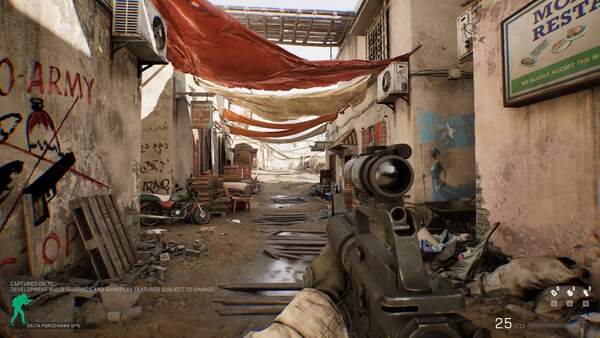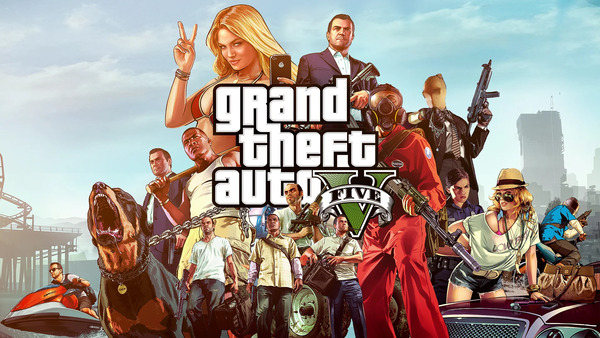Popular Now
Few tactical shooters have left as distinctive a mark on military gaming as Delta Force. Developed by NovaLogic and launched in 1998, the game carved out its own territory by focusing on sprawling outdoor maps and realistic long-range combat. Unlike other shooters of the time that emphasized close-quarters battle and linear missions, Delta Force introduced expansive environments and engagements often taking place hundreds of meters away. This design choice wasn’t merely aesthetic—it became the foundation of its gameplay identity.
In this article, we’ll delve deep into the long-range combat system in Delta Force, exploring how it works, why it mattered, and how it continues to influence military shooter design today. From the design philosophy to player tactics, from environmental variables to multiplayer mechanics, we’ll break down this unique aspect in full.

1. Origins of Long-Range Combat in Delta Force
When Delta Force was released in 1998, it arrived in a gaming landscape still dominated by close-range, corridor shooters like Doom and Quake. NovaLogic decided to go a different route.
The Voxel Terrain Engine
At the heart of Delta Force’s long-range engagement was NovaLogic’s proprietary Voxel Space engine. Unlike polygon-based engines, this allowed for massive outdoor environments without compromising performance on late-90s hardware.
Key Features:
-
Terrain visible for kilometers
-
Sniping possible from long distances
-
Complex line-of-sight mechanics based on elevation and cover
The decision to allow players to see (and shoot) targets from several hundred meters away made it one of the first games to reward patience and precision over raw reflexes.
2. The Design Philosophy Behind Open Terrain
NovaLogic wanted to simulate real-world military tactics, particularly those of elite units like Delta Force operators who often engage enemies at distance in open environments.
Emphasis on Planning Over Speed
Traditional FPS games rewarded fast reflexes. In Delta Force, success came through:
-
Reconnaissance and scouting
-
Knowledge of terrain
-
Judicious use of scopes and binoculars
Player Agency and Freedom
Rather than being pushed through narrow levels, players could:
-
Choose flanking routes
-
Avoid or engage patrols from afar
-
Pick optimal sniper perches
This allowed the long-range mechanic to shine as players adapted their tactics to wide, open maps.
3. Realistic Ballistics and Scope Mechanics
Unlike hitscan-based games of the time, Delta Force implemented basic ballistic physics that mimicked bullet drop and travel time.

Hitting Targets at Distance
To snipe effectively, players had to:
-
Compensate for bullet drop
-
Lead moving targets
-
Consider wind and elevation (in later titles like Delta Force: Land Warrior)
Scopes and Zoom Levels
Early missions forced players to rely heavily on optics:
-
4x, 8x, and 12x zoom scopes
-
Binoculars with range indicators
-
Lack of crosshairs for some weapons meant iron-sight reliance
Mastery of these tools was essential for long-range dominance.
4. Enemy AI and Distance-Based Behavior
AI enemies in Delta Force were programmed with surprisingly nuanced behavior depending on range.
Distance Awareness
Enemies responded differently based on how far away the player was:
-
Beyond 300 meters: they often didn’t react to unsuppressed gunfire unless hit
-
Within 150 meters: they’d take cover, return fire, or call for reinforcements
Suppression and Stealth
Silenced weapons allowed for:
-
Picking off isolated targets from afar without alerting others
-
Remaining undetected if positioning was smart
This tied directly into how players leveraged distance as both a weapon and a shield.
5. Tactical Movement and Terrain Utilization
Success in long-range engagements wasn’t just about shooting—it was about where and how you moved.

Using Hills and Ridges
Players learned to:
-
Advance using terrain folds
-
Use elevation for maximum field of view
-
Duck behind crests after firing to avoid detection
Avoiding Silhouetting
One realistic element was the danger of cresting a hill:
-
Exposing your full body against the sky made you an easy target
-
Advanced players learned to “peek” without revealing themselves fully
These small tactical nuances turned Delta Force into a playground for patient strategists.
6. Weapon Selection and Loadout Strategy
While the game offered a decent variety of weapons, long-range combat demanded specific tools.
Best Weapons for Distance
Some popular choices included:
-
M40A1 Sniper Rifle: Reliable bolt-action with high accuracy
-
Barrett .50 Cal: Heavy punch, ideal for vehicles or body armor
-
M16/203 with Scope: Versatile for mid-range and long-range
Considerations for Loadouts
Players had to consider:
-
Scope type vs. terrain (tight scopes in forests were useless)
-
Ammo count vs. engagement length
-
Backup weapons for unexpected close combat
Choosing poorly could render a mission almost impossible to complete effectively.
7. Multiplayer: A Different Beast at Long Range
Long-range mechanics took on new life in multiplayer, where human players added unpredictability.
The Sniper Meta
In online matches:
-
Snipers dominated unless countered by skilled flankers
-
Good sniping spots became hotspots for duels
-
Players used terrain exploits to conceal themselves
Counterplay and Stealth Tactics
Multiplayer forced innovation:
-
Smoke grenades to obscure sniper vision
-
Crawling through grass to avoid detection
-
Coordinated rushes to overwhelm entrenched shooters
The interplay between long-range superiority and sneaky tactics made multiplayer uniquely tactical.
8. Mission Design and Open Objectives
Long-range gameplay was supported by missions that encouraged player agency.
Sandbox-Style Objectives
Rather than fixed paths, many missions allowed for:
-
Approaching objectives from multiple angles
-
Taking out enemies before even entering a base
-
Sniping guards on towers to clear paths
Hidden Bonuses
Some missions rewarded:
-
Eliminating all enemies from a distance without being seen
-
Finding high ground early to scout the entire map
These mission choices taught players to think beyond the crosshairs.
9. Evolution Across the Series
As Delta Force evolved—through Land Warrior, Black Hawk Down, and Task Force Dagger—the long-range mechanic was refined.

Improvements and Variations
Later titles introduced:
-
Bullet drop simulation improvements
-
Wind effects
-
Dynamic weather and night vision for distance spotting
Each iteration added complexity to the long-range engagement philosophy.
Shift Toward Urban Combat
Eventually, the series moved toward tighter, more cinematic missions (Black Hawk Down). Some fans loved the realism, others missed the open deserts.
Yet the long-range DNA never truly vanished.
10. Influence on Modern Tactical Shooters
Delta Force’s long-range combat has had a lasting influence on titles that followed.
Inspirations Seen In:
-
Arma Series: Tactical realism and long-distance shooting
-
Sniper Elite: Emphasis on distance, bullet physics, and stealth
-
Ghost Recon (early titles): Open-ended maps with sniper-focused gameplay
Legacy Mechanics
Modern games borrow from Delta Force in areas like:
-
Recon before engagement
-
Sound and distance mechanics
-
Freedom of approach
Though less famous today, Delta Force’s innovations still echo in modern military shooters.
Conclusion
The long-range combat system in Delta Force was more than just a gimmick—it was the heart of the experience. By offering players the chance to engage enemies from afar, plan missions using real-world tactics, and rely on terrain and optics rather than twitch reflexes, Delta Force redefined what tactical shooters could be. Its lasting influence is visible even in today’s most advanced military simulators.
Though newer games have expanded and refined the formula, the foundation laid by Delta Force remains a benchmark in tactical FPS design.
















